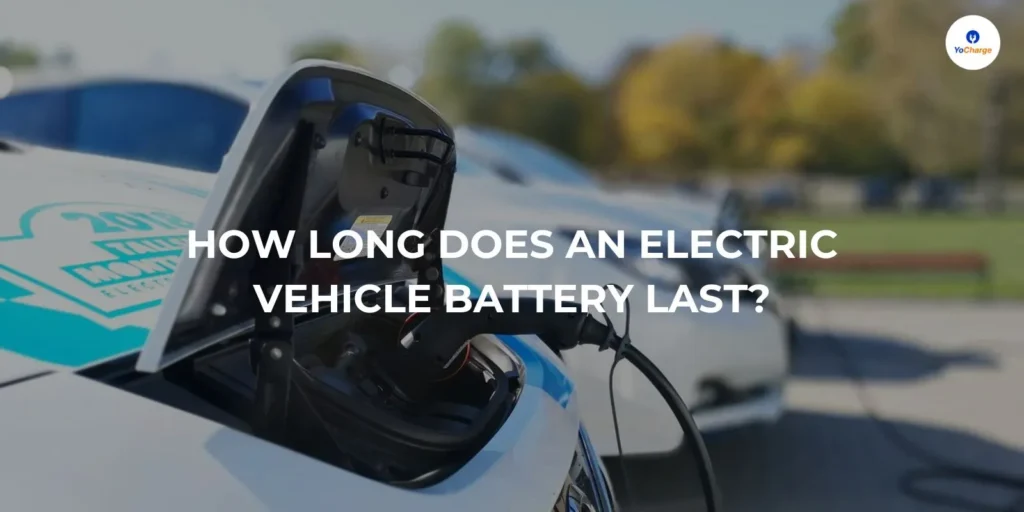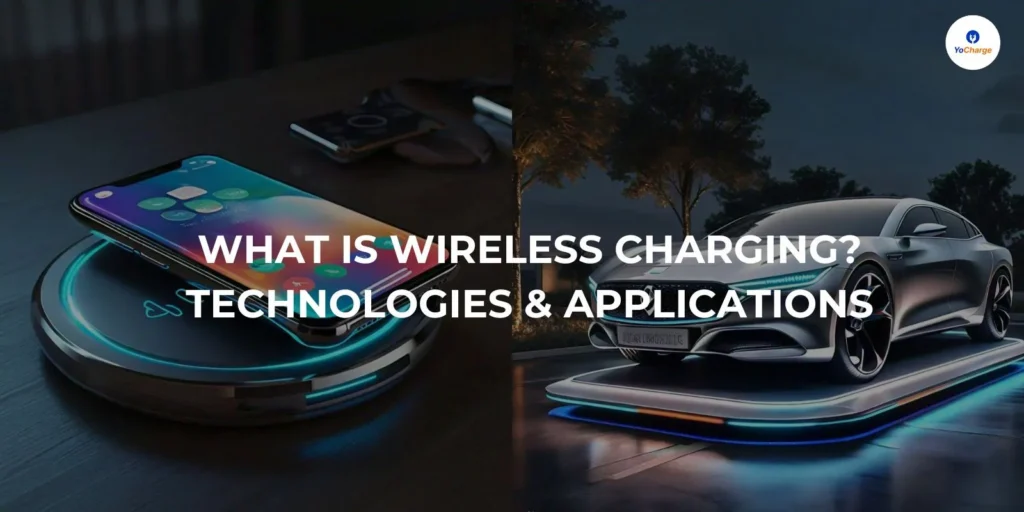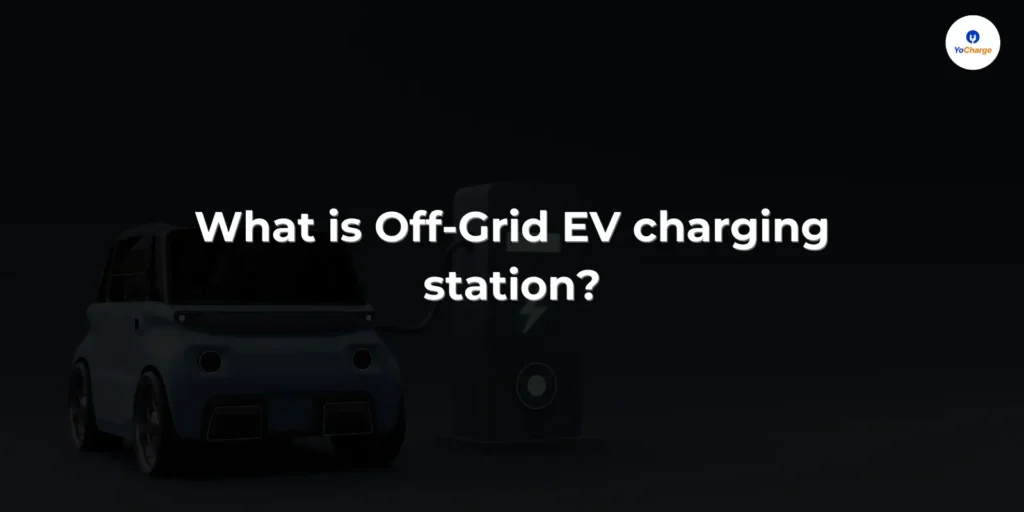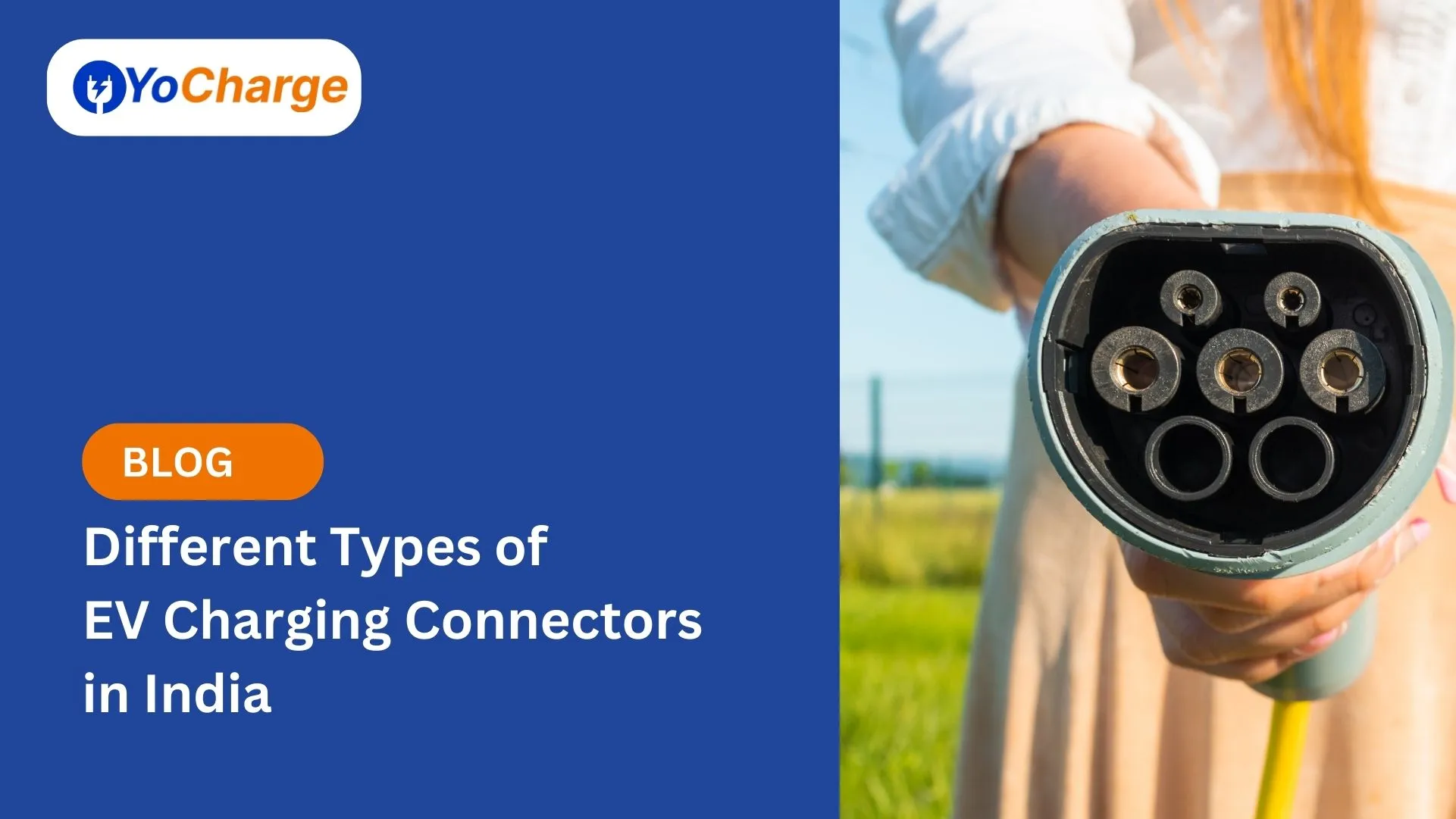
Electricity has become part and parcel of our daily lives. So much so, that now even our vehicles require electricity to recharge their batteries to run. EV Chargers or EV Charging Connectors are the end-point connectors that are fixed on the charging cable and get attached to the electric vehicle and facilitate charging. In this blog, we’ll discuss the types of EV chargers in India in depth.
Indian Electric Cars & the Type of Connectors in India:
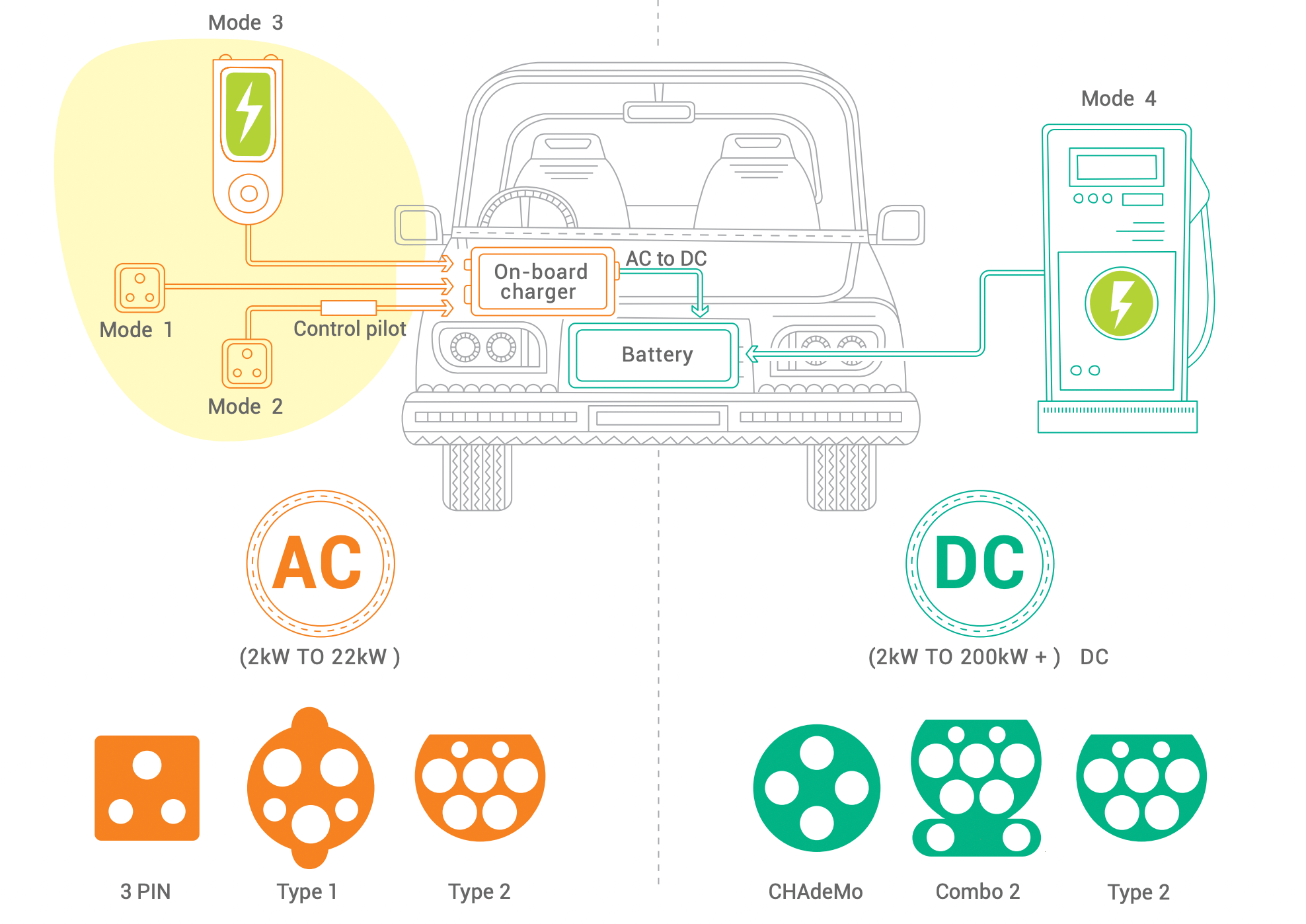
| Electric car | AC Connector (Slow Charging) | DC Connector (Fast Charging) |
|---|---|---|
| Audi e-tron SUV and Sportback | Type 2 | CCS |
| BMW iX | Type 2 | CCS |
| BYD E6 | Type 2 | CCS |
| Hyundai Kona Electric | Type 2 | CCS |
| Jaguar I-Pace | Type 2 | CCS |
| Lexus NZ | Type 2 | CHAdeMO |
| Mahindra e2o | IEC60309 | GB/T |
| Mahindra eVerito | Type 2 | GB/T |
| Mercedes-Benz EQC | Type 2 | CCS |
| MG ZS EV | Type 2 | CCS |
| MINI Cooper SE | Type 2 | CCS |
| Nissan LEAF | Type 2 | CHAdeMO |
| Porsche Taycan | Type 2 | CCS |
| Tata Nexon EV | Type 2 | CCS |
| Tata Tigor EV (Old) | IEC60309 | GB/T |
| Tata Tigor EV (New) | Type 2 | GB/T |
| Tata Tigor EV Ziptron | Type 2 | CCS |
Different Types of EV Charging Connectors
| EV Charger | Output Type | Power Output | Input Voltage | No. of Guns | Socket Type | Compatible with EV |
|---|---|---|---|---|---|---|
| LEV AC | AC charger | 3.3 KW | 230 V AC, Single Phase, 50 Hz | 1 | IS-60309 | 2W, 3W, legacy/first era 4W (Tata Tigor, Mahindra e-Verito, Mahindra e20) and advanced 4W models (using portable charger provided by OEMs). |
| Bharat AC001 | AC charger | 3*3.3 KW | 415V, three phase AC | 3 | IS-60309 | 2W, 3W, legacy/first era 4W and advanced 4W models (using portable charger provided by OEMs) |
| Type 2 AC | AC charger | 7.4 and 22KW | 7.4 KW – 230V, single phase AC & 22 KW – 415V, three phase AC | 1 | IS-17017-2-2 | Capable of charging legacy 4W as well as most of the existing and future EV models |
| Bharat DC 001 | DC charger | 10KW/15KW | 415V, three phase AC | 1 or 2 | GB/ T 20234.3 | Capable of charging Tata Tigor EV, Mahindra e-Verito, small buses and vans |
| CCS | DC charger | 25-150KW | 415V, three phase AC | 1 | IS-17017-2-3, Configuration FF | Tata Nexon, Hyundai Kona, MG ZS EV Used by several manufacturers – Hyundai, Kia, BMW, Audi, Mercedes, MG, Jaguar, Mini, Peugeot, Vauxhall / Opel, Citroen, Nissan, and VW Vehicles with CCS connectors can be charged using Type 2 AC connectors as well |
| CHAdeMO | DC charger | 25-150KW | 415V, three phase AC | 1 | IS-17017-2-3, | Used by Japanese car manufacturers |
AC Charging connectors
They are usually slow charging. A regular three-pin outlet with an EVSE cable or a wall-mounted home charging point can be used to charge an electric automobile at home. Drivers of electric cars pick a home charging station to take advantage of faster charging and built-in safety features.
There are mainly two types of AC connectors. They are :
- IEC60309
- Type 2 Connectors:
1. IEC60309
Charging with 1 Phase, 15 A Outlet with connector IEC 60309 and related safety interlocks. Depending on the current supplied and the number of phases allowed, a variety of plugs and sockets of various sizes and pin counts are available. The fittings are popular in open-air settings since they are weatherproof to IP44. They’re also often utilised in situations when a high current rating or three-phase capabilities were not required.
The voltage range and frequency utilised are color-coded on the cable connectors and sockets, for 50–60 Hz AC power, common colours are yellow for 100–130 volts, blue for 200–250 volts, and red for 380–480 volts. The blue fittings are frequently used to provide weather-resistant external sockets for outdoor equipment.
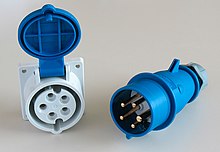
Reasons why EV charger connectors are not designed like normal three-plugs
- Three-pins are unable to withstand power more than 10Wh
- Affected by weather
- Three-pins does not provide two-way communication
2. Type 2 Connectors

The IEC 62196 Type 2 connector (Mennekes) is mostly used in Europe for charging electric vehicles. It is also recommended at countries like New Zealand. The circular connector has a flattened top edge and was designed to charge battery electric vehicles at 3–50 kilowatts. A single-phase or three-phase alternating current (AC) is used to generate electricity (DC).
The Type 2 AC connector consists of seven pins out of which:
- One pin is earth pin,
- One neutral pin,
- three-line phase pin
- Two signalling pins.
However, if the EV Charger is only single phase like 7.4 KW Single Phase EV Charger then, in that case out of the three plugs for phase, only one has conductor, rest are blind. Consequently, Type-2 AC Chargers look exactly similar from 7.4 KW to 22 KW AC, the only difference is in phase conductors. While in 7.4 KW single phase, there is only one-conductor, the three phase (22 KW) has 3 conductors.
DC Charging Connectors
The DC-EV Connectors provide direct DC power to the EV’s battery pack. A Rapid-DC charging system can charge at 50kW, whereas an Ultra-Rapid charging system can charge at 100kW to 150kW. Rapid chargers do not charge at their full power rating all of the time to safeguard the battery. DC chargers perform the conversion from AC power to DC power at the charging station itself. These chargers are in demand for charging EVs within a matter of a few minutes, this will prove beneficial for heavy duty electric vehicles that have to travel long distances. These are suitable to be installed on highways.
There are mainly three types of DC charging connectors:
- GB/T Connector
- CHAdeMO connector
- CCS1 and CCS2 connector
1. GB/T Connector
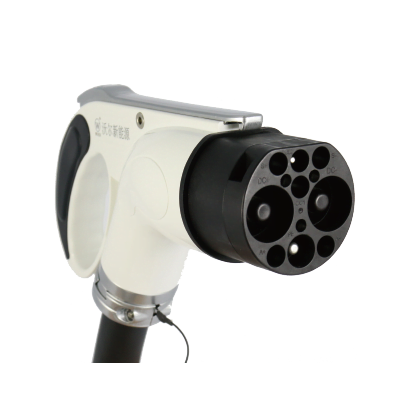

GB/T connectors are mainly used in China. The GB/T standard allows for charging power of up to 250 kW, allowing electric vehicles to charge even faster. The vehicle connector can also be locked in its bracket to prevent it against robbery. The power source used by GB/T connectors are DC power. CAN BUS signalling is used by the Chinese GBT connection. It does not use control protocols based on PLCs.
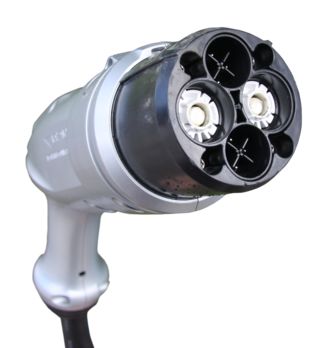
2. CHAdeMO connector
In 2010, the Japanese developed the CHAdeMO EV Connector Specification, a DC-based EV Connector Specification. The CHAdeMO EV Connector Specifications are used to create DC-based EV Connectors that offer up to 62.5 kW by 500 V with 125 Amperes, direct current for fast charging of battery electric vehicles.
For the Control Pin(CP), the CAN Protocol is utilised to make communication between the electric car and the charging system easier. The new CHAdeMO EV Connector Specification 2.0 provides for up to 400kW of charging power. Most electric vehicles are compatible with the CHAdeMO connector.
3. CCS1 and CCS2 connector
Combined Charging System (CCS) charging sockets use shared communications pins to combine AC and DC inlets. As a result, the CCS charging socket occupies less space than CHAdeMO and other AC plugs. Because CCS1 and CCS2 share the same DC pin architecture and communications protocols, manufacturers can easily switch the AC plug portion for Type 1 in the US and Japan for Type 2 in other markets.
It communicates between an electric car and the charging system via a PLC (Power Line Communication). North America, South Korea, and a few other countries primarily use CCS 1. European countries are the primary users of CCS 2.
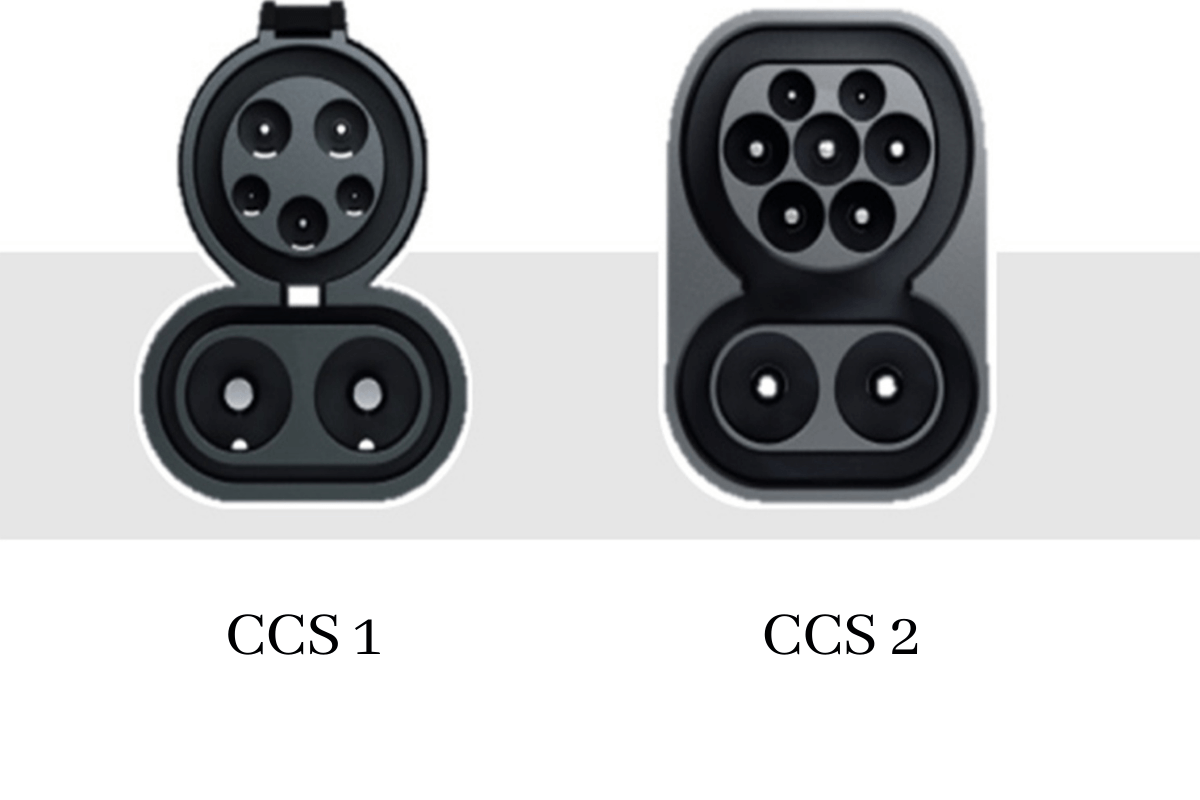
Summary
The type of connector used is mainly dependent on the battery bank voltage (High Voltage battery) used in the electric vehicle. Also the type of connectors are defined by geography, where the same connector is called by one name in one geography & by different name in other. Apart from these regular connectors, the industry is constantly in phase of research & new connectors like megawatt connectors may soon be part of common vehicle system.

Introducing YoCharge
Yocharge is the EV Charging Management Software Company. As a trusted partner of Charge Point Operators our goal is to simplify the launching, operation & growth of EV Charging Services Business.
